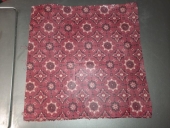Laurel, you aren't alone, or crazy... I have been going through my own health troubles, same region of the body. In reading up on my problems, I learned of interstitial cystitis, and wondered... symptoms are similar and difficult to pinpoint/isolate. Our urinary and lower GI systems are intertwined, and troubles with one can affect the other: dehydration, diet, irritation, constipation, intestinal gas. Your description of "congested" seems a reasonable one, if not medically accurate, and being dismissed with "yeah, that's not a thing..." just sucks.
Our "core" muscles are right there too, and some of my PT exercises for low back/hip pain are quite similar to pelvic floor exercises (Kegels?). In the midst of treatment I had a flare-up of pain in my hip, and that night at bedtime I did my PT routine (hadn't done for quite a long time) and within an hour when I woke to pee, my hip didn't hurt, AND my urinary discomfort was considerably less.
*reminder : do my PT exercises...

If the IC is still an issue, maybe you need to see a urologist? Whether it is seeing the right specialist, or right doctor - you might also need to try again, as Trace suggests, if the provider(s) aren't a good match (comfort, communication, responsiveness). I have had mostly good results within my urologist's team, but have been misunderstood by a couple in the the office, and needed to persist to get the correct information or adjustments made. I've had the best communication with the Physician's Assistants (PA's) since they have more time to listen and explain than my Doctor typically does.












